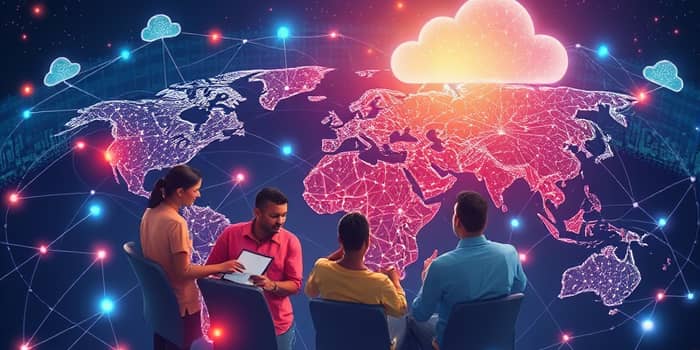
In recent years, the outsourcing landscape has undergone a profound transformation driven by the rapid integration of artificial intelligence. Organizations around the globe are rethinking traditional models, embracing new technologies, and forging deeper partnerships. This article explores how AI is reshaping outsourcing, enhancing productivity, and charting the course for future collaboration.
By examining market trends, operational shifts, and emerging risks, we provide practical insights to help business leaders and practitioners navigate this complex environment and seize new opportunities.
The global outsourcing market was valued at $302.62 billion in 2024 and is projected to reach $450 billion by the end of 2025, climbing to $525.23 billion by 2030. This growth reflects a steady Compound Annual Growth Rate (CAGR) of 5.1% since 2020. While cost reduction remains a factor, technological advancement, especially AI and automation, has emerged as a primary driver of expansion.
Organizations are no longer outsourcing simply to save money; they are seeking partners who can provide cutting-edge tools, data-driven insights, and scalable solutions.
AI integration is fundamentally altering the types of tasks that get outsourced. Rather than replacing human roles outright, AI often augments human expertise. Repetitive, rule-based activities are automated, freeing outsourced teams to focus on higher-value and strategic functions.
In software development, for example, tools like GitHub Copilot and Amazon CodeWhisperer automate boilerplate code generation. Outsourced developers now spend more time on oversight, model fine-tuning, and system maintenance, shifting the balance from execution to governance.
Similarly, a new wave of “Custom AI Model Training as a Service” has emerged. Outsourcing firms train proprietary models on client-specific data, delivering bespoke solutions that go beyond generic, off-the-shelf offerings.
The outsourcing industry is evolving toward managed service models. These arrangements include staffing, management, training, and internal support, resulting in long-term collaborative partnerships rather than transactional engagements.
Geographically, nearshore outsourcing is gaining traction for AI projects that require intensive collaboration and quick iteration. Countries such as Mexico, Poland, and Portugal have become preferred hubs due to their skilled talent pools, cultural alignment, and time-zone compatibility with major markets.
In parallel, traditional offshore locations continue to serve high-volume tasks, while nearshore centers focus on specialized AI and automation work.
Cost savings remain an important consideration, but companies are placing increasing emphasis on value creation, speed to market, and innovation. Key drivers include:
This shift toward quality over quantity means that businesses now seek fractional executives, AI architects, and strategic consultants, not just entry-level staff for repetitive tasks.
As outsourcing grows more sophisticated, concerns around security, privacy, and compliance intensify. Companies demand partners with robust data protection practices to mitigate the risk of breaches and digital fraud.
Another critical issue is workforce dynamics. While AI adoption can yield dramatic gains—workers using AI tools report a 66% throughput increase on daily tasks—it also poses the risk of de-skilling. Routine knowledge work might atrophy unless organizations invest in ongoing upskilling and reskilling programs.
Generative AI has already delivered remarkable economic outcomes. J.P. Morgan analysts estimate a $1.4 trillion increase in market capitalization and a 45% rise in corporate profits within the first four months of generative AI adoption in early 2023.
Looking ahead, the global AI market is projected to grow by 38% in 2025 and sustain an annual growth rate of 36.6% through 2030. These figures underscore the transformative power of AI-driven outsourcing and its potential to reshape multiple industries.
As AI technology matures, outsourcing will continue to evolve in unpredictable ways. Organizations must remain agile and adopt a forward-looking mindset. Key strategies include:
By embracing these practices, businesses can not only mitigate risks but also capitalize on emerging opportunities. AI-driven outsourcing offers a path to accelerate innovation, unlock new revenue streams, and strengthen competitive advantage.
In conclusion, the intersection of AI and outsourcing represents one of the most significant shifts in modern business operations. Companies that adapt to this new paradigm—prioritizing collaboration, security, and continuous growth—will thrive. The future belongs to organizations that harness the combined power of human creativity and artificial intelligence to achieve lasting success.
References













